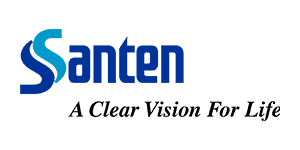Improving eye health via clearer data analysis
Santen uses cloud-based analytics from SAS to help develop new ocular therapies faster
When collaborating with a global network of team members, consultants and partners, it’s important to maintain a consistent set of data that is referenced and analyzed throughout the day and night. That’s especially important for pharmaceutical companies researching medications to treat disease and heath ailments.
With cloud-based analytics from SAS, we’re in a better position to develop innovative treatments to improve the eyesight and health of people worldwide.
The importance of data integrity is most evident when bringing a new therapy to market. To sell a new drug, pharmaceutical companies must request approval from geographically managed medicine review agencies, like the Food and Drug Administration (FDA) in the US. The formal application process provides agencies with the information needed to evaluate the drug efficacy, quality, safety, labeling and more.
Santen knows this process – and the effect that reliable and sound data has on it. Headquartered in Osaka, Japan, Santen has a global team of 17 programmers located in Japan, China and the US. This group – led by Nina Worden, Director of Statistical Programming – collaborates with statisticians and medical scientists in France, Germany and other countries around the world. It’s a coordinated team with a global impact.
“I am located in our Emeryville, California office, but I have team members located globally,” Worden says. “We participate in the creation of the data packages for new drug application submissions, whether they’re for the FDA, the PMDA in Japan, the CFDA in China or the European Medicines Agency.”
To manage this process, the team needs to house and analyze data regardless of where employees work.
Digging out from data deluge
During its creation of global development processes, Santen recognized the need for data reliability and access among functional groups and site location. And that’s where SAS entered the equation.
“Working in a global, cross-functional team environment on critical projects, it was important to ensure consistency, seamless access and version control across all the various groups at Santen,” Worden says. “The SAS® Life Science Analytics Framework gave us what we needed.”
The solution provides Worden’s team a centralized system for both the analysis and the data behind it. Team members can manage data, run audit reports and see how work is progressing. And the cloud-based infrastructure helps Worden’s team work around the clock, across multiple countries and time zones.
Many people, many places, one centralized system
“The centralized system allows team members in different continents to look at data without having to transfer data to them,” she says. “With the SAS Life Science Analytics Framework, everyone is viewing the same snapshot of the data. Global access to consistent data is the dream, and we’ve achieved it.”
The cloud-based deployment also allows Worden to assign responsibilities by each employee’s role, and set access privileges down to the file level within the same directory. For instance, she might not want certain programmers to be able to delete things, whereas other team members might have full authorization and enhanced capabilities.
“If I want a medical science expert in Paris to have the ability to read a specific data set – but not alter it – I can grant read-only access to the specific file,” Worden explains. “I like the granularity of access – from a large, global perspective down to individual teams and functions.”
Worden also has the ability to audit reports. “A statistician might ask, ‘I like the previous version of the table you produced, could we get it back?’ Because the table was versioned, we can go into the audit report, see when it was changed and restore the previous version.”
Delivering ophthalmic treatments to those in need
While the impact on day-to-day operations is impressive, Worden also is excited about how those benefits can affect the lives of customers who use Santen’s therapies for conditions like glaucoma, dry eye, ocular allergy, uveitis and other ocular diseases.
“There is direct impact on patients, as they are able to receive treatments they need quickly because we can develop new therapies – and get them approved – faster. With cloud-based analytics from SAS, we’re in a better position to develop innovative treatments to improve the eyesight and health of people worldwide.”

Challenge
- Establish one centralized clinical information repository for all development team members.
- Drive global collaboration through intuitive, easy-to-use analytics.
- Streamline clinical research processes to quickly gain insights.
- Swiftly product audit reports.
Solution
Benefits
- Team members around the world can easily access the same version of data, thereby enhancing collaboration, drug studies and development.
- Individual tasks and data access can be granted based on job role and function.
- Management can track the workflow and maintain a history of it.
- Compliance data packages for new drug submissions are prepared efficiently.
- Consumers get the eye care treatments they need for improved health and vision.